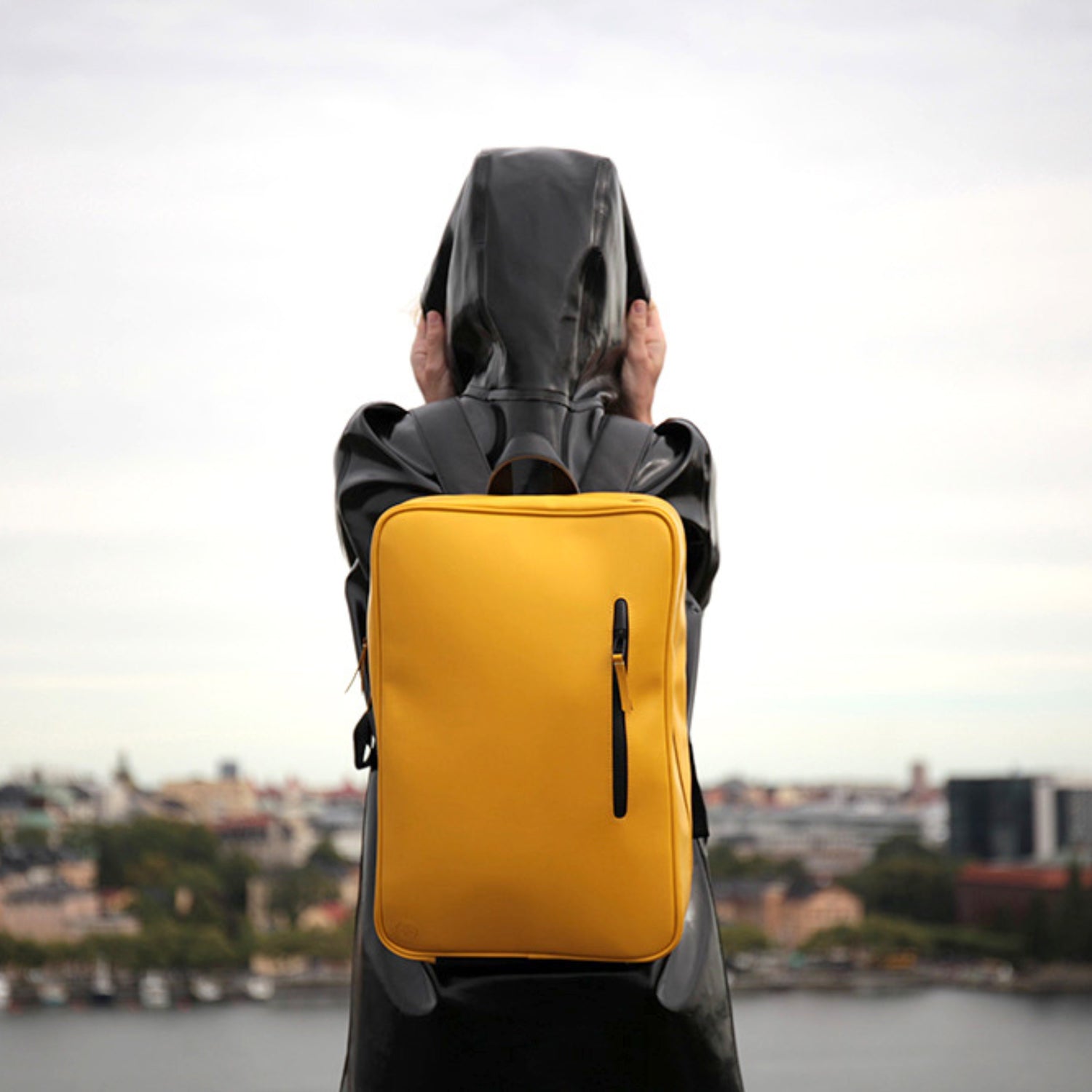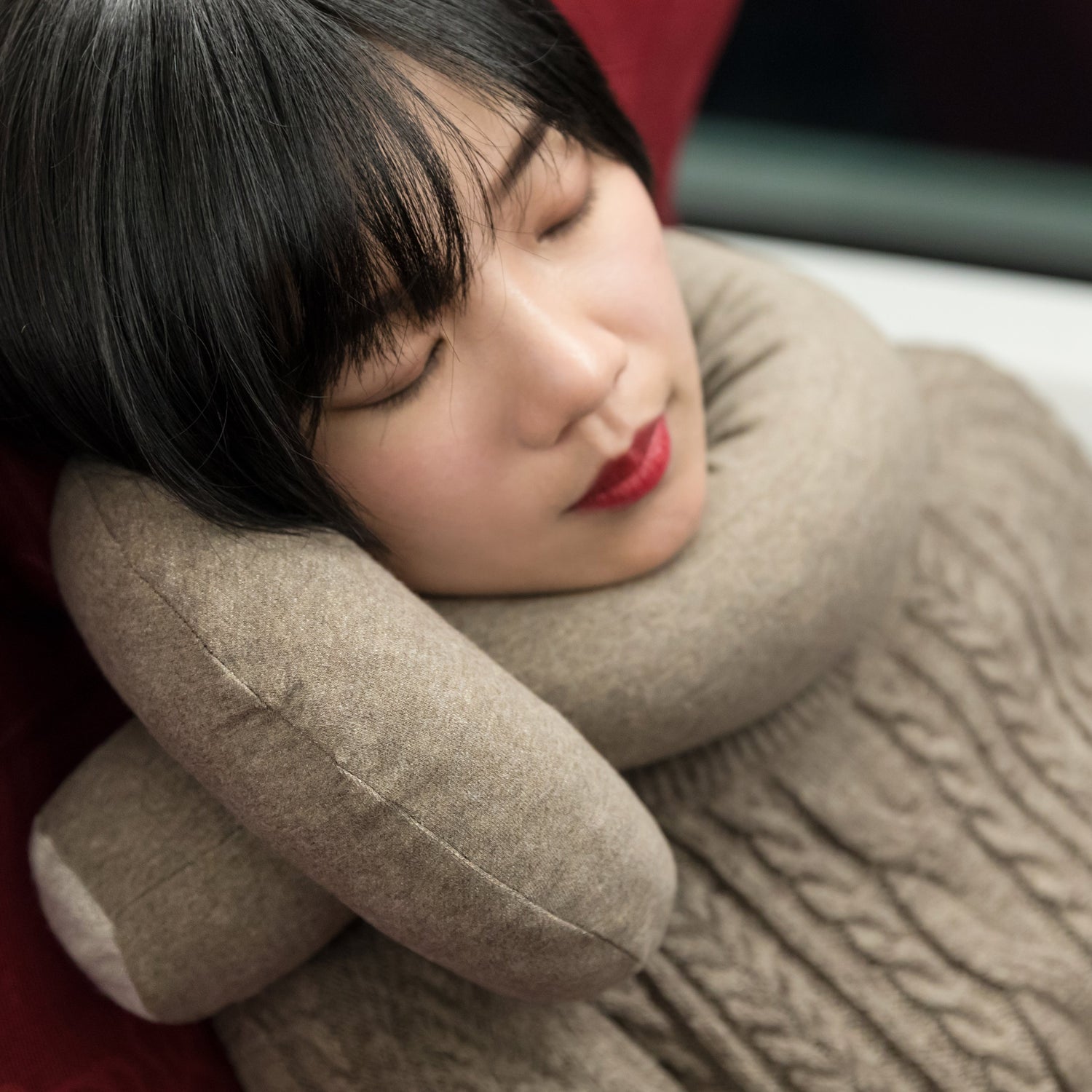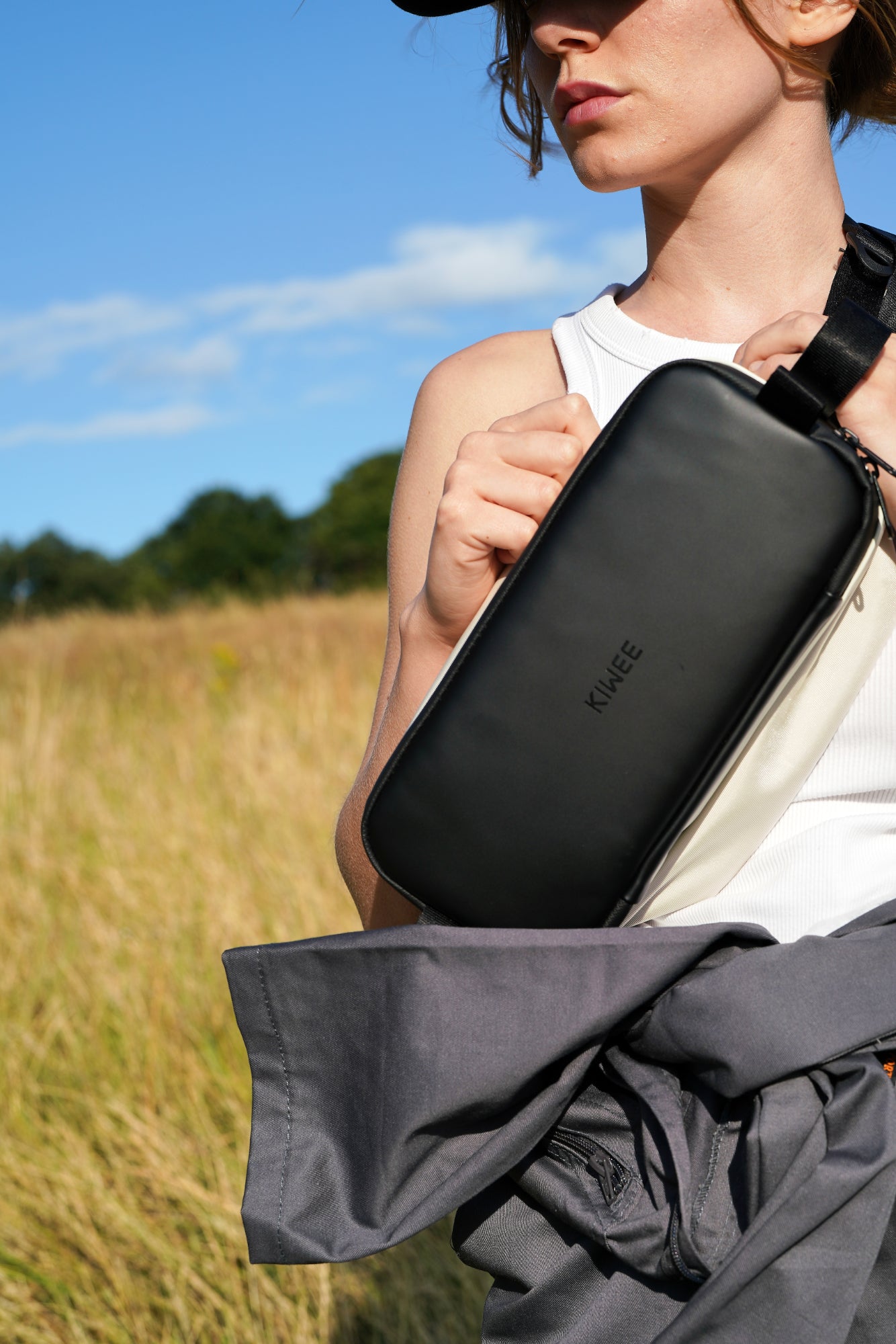
Bag Design | Material Search to Make a Backpack
Share
Recently, while searching for photo materials, I came across some texts regarding our bag design story back in 2016, when we had just started our brand. One of them was about our research and development journey during the first 12 months. It vividly recorded our ups and downs, emotions, and constant struggles as we made our first backpack product without any experience.
Today, in February, Kiwee has been around for 7 years. We would like to share this old article again to motivate ourselves and hopefully provide some inspiration to friends who are interested in starting their very first products and going about the process of bag design.
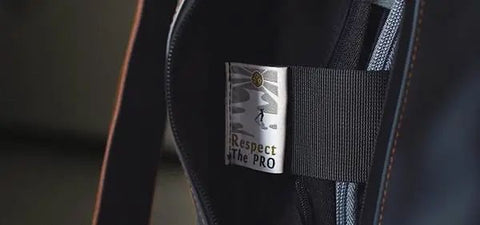 Discover quality materials,
Discover quality materials,Craft a lasting backpack.
In February 2015, our team went to Chengmai county, a subordinate of Haikou, to spend New Year's Eve.
While walking on the beach, we saw several people using rakes to plow in the sea. As designers with a strong sense of curiosity, we naturally approached them. The elder told us that he was sifting for clams in the shallow beach.
During the conversation, we noticed that the elder was wearing a diving suit that was polished and gleaming from wear. It was clear that he had worn it for a long time. We asked him, "How long have you been wearing this fishing suit?" The elder replied, "I bought this more than a decade ago and have been wearing it ever since." With our limited knowledge, we secretly marveled at the elder's durability, feeling the suit, and surprisingly discovering that it felt like tough, worn-in leather.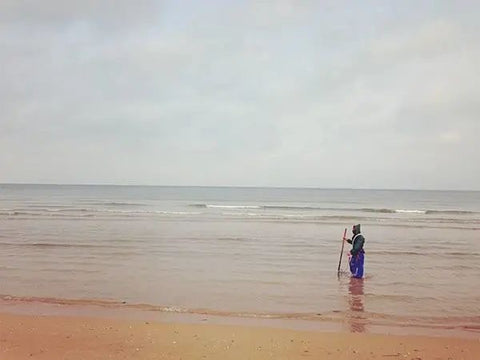
After dinner that day, we talked about how wonderful this old fishing jacket was, the common "kesui" material bags seen in Shanghai subway stations, the Kikkoman soy sauce bottle from Japan, and many other beautiful and practical objects left behind by time. Everyone agreed that if we ever started our own brand someday, we would definitely want to start with these beautiful and practical things that last.
As expected, this idea was put into the bag design project and then forgotten when we returned to Shanghai.
However, a turning point came three weeks later on a rainy day. A man riding a bicycle in a black, green raincoat from the 1980s brushed by us.
The string in our heads was once again struck.
So, we quickly got our hands on an old raincoat of the same style. Upon using it, we found that the material and texture were similar to what we had seen at the seaside. Both were composite materials, the outer material appeared sturdy and tight, waterproof, and wear-resistant, smoother than ordinary leather, and the base material was pure cotton canvas with a simple and plain feel. The only flaw was that the material had a strong odor. But at the time, we were only excited to have encountered this material again, very excited.
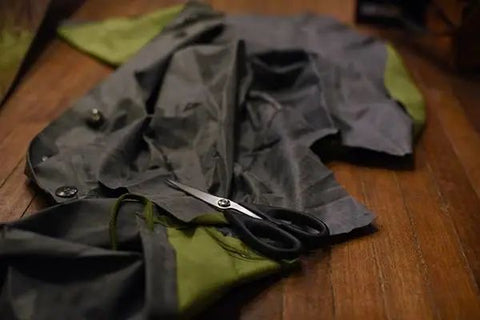
With that, the outline of our entire project became clear:
We aim to take inspiration from lifestyles and products that have been shaped by time and extract the finest materials from the corners of life, turning them into products suitable for modern urban life.
Since the initial inspiration came from travel, we'll start with travel products. After digging into our own pain points and asking friends who travel heavily, we found that many people complain about backpacks, either because they are inconvenient or simply because they are unattractive.
Thus, we set our first product: the backpack.
We want this backpack to be usable both for commuting and for short traveling. It's not the 40-liter backpack that you use for hiking, but a companion that can take you from Tokyo to Hong-kong for a 2-day business trip, or that you can carry with you for a day in the market in Kashgar after leaving your luggage at the hotel.
At that time, our positioning for this product was short-term travel and commuting were the core, and there were three specific requirements:
We wanted to design a raincoat that would:
- Highlight the waterproof properties and texture of the fishing jacket material that we liked.
- smart organizing and functional
- Be visually appealing.
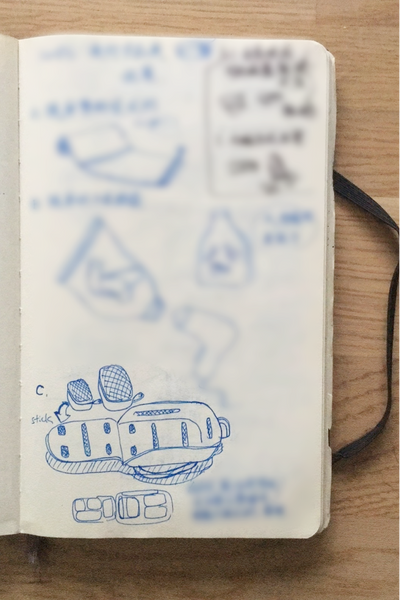
(very first sketch)
So, we conducted research on the specific needs of friends who frequently travel between cities. We then moved on to the fun part: bag design and creating prototypes by hand. We also tackled the task of finding a bag and luggage processing factory and the corresponding material supplier, which wasn't our expertise at all.
As the initial bag design was almost complete, we found a small bag factory near Shanghai. Excitedly, we cut the material from the raincoat and sent it to the factory to make the first samples.

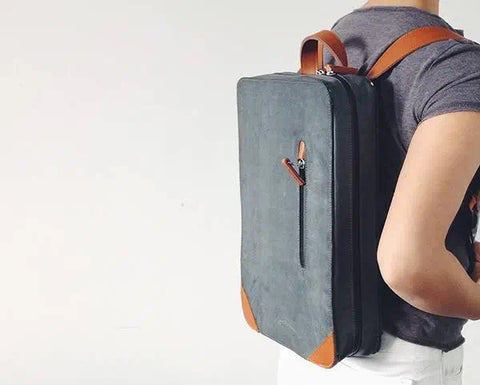
After 14 days, the bag design sample was completed and looked great. Several times, we were complimented and were asked by strangers where we bought it when we carried it around. The team also took it on trips to Berlin and Copenhagen to test it in various situations and everyone found it very practical.
We were so confident back then, except for a faint odor from the material that would sometimes waft up when it got windy. We improved the second version of the sample based on feedback from its use and tried making other prototypes with the same material.
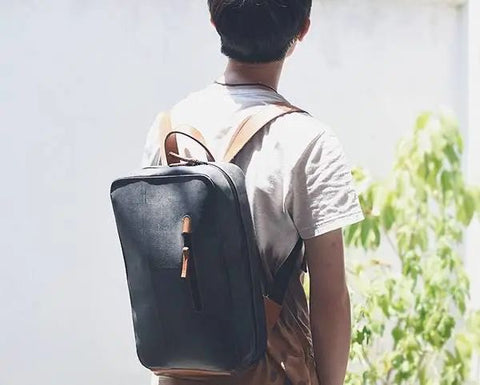
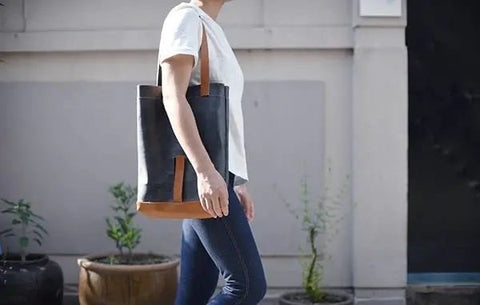
In our search for a suitable material supplier, we learned that this material is called "Nitrile Rubber" composite material. This nitrile rubber is a byproduct of petroleum and has good wear resistance and oil resistance, which results in its delicate texture. It is mainly used for cushioning gaskets, cables, and other industrial purposes.
We also found out that when used as a clothing material, its outdated production process makes it much heavier than newer waterproof material coating like PVC, despite having similar physical properties.
As a result, it has been largely eliminated by the functional clothing industry by now. Rarely there are only a few small factories still producing this material for certain functional clothing.
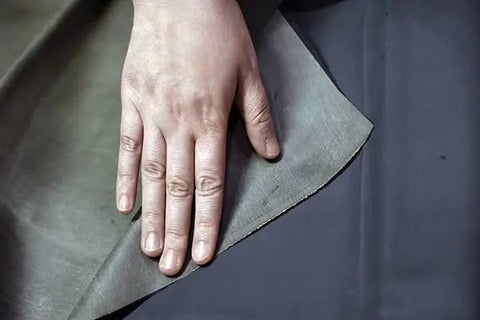
We understood that there was a risk of unreliable supply with fewer options for this type of supplier. However, we were so enamored with the visual and tactile effects of this material that we still try to find a factory that produces nitrile rubber material.
We traveled to many places during this time and finally, the owner of a small garment factory was moved by our persistence and dedication and told us about his upstream supplier, a small textile factory located in a certain place in Shandong. After several rounds of inefficient phone communication, we decided to visit this nitrile rubber Material processing factory.
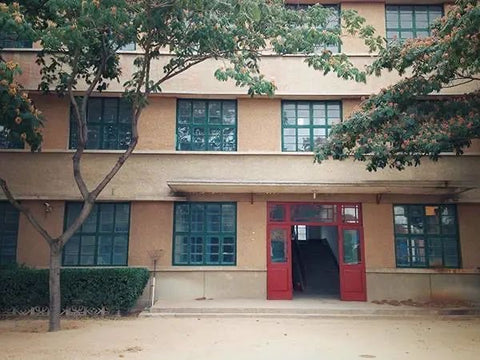
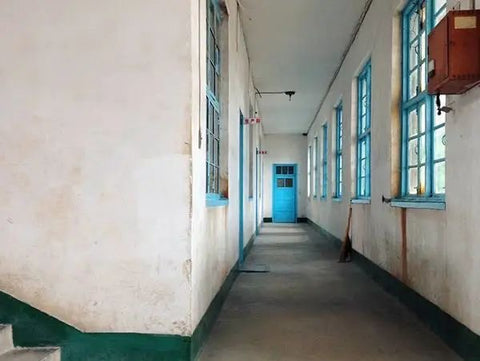
After a day of traveling through rolling fields of corn, we finally arrived at a factory that seemed frozen in time for 30 years. The buildings was still very Soviet style from those old days.
After visiting the sample rooms and examining various thicknesses of rubber Material, we communicated our technical requirements for our backpack with the factory manager and technical director. With excitement in our hearts, like discovering a rare medicinal mushroom in a remote countryside, we quickly agreed on sample order with this factory.
In late June, two rolls of material samples arrived at our office, and we no longer had to make do with scraps from fishing jackets. The samples were just as beautiful as we remembered, and because they were entire rolls of Material, we were able to measure the waste ratio and estimate how many backpacks could be made from one roll.
We felt like we were one step closer to mass production.
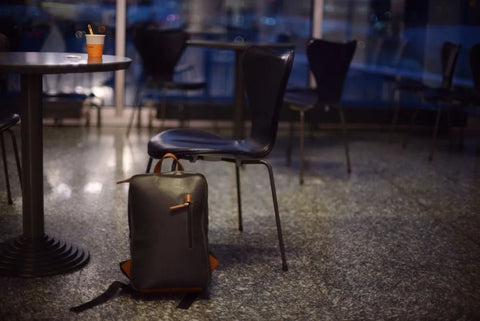
While we were working on for a sample backpack, we came across information online that nitrile rubber can easily be oxidized at high temperatures, affecting its physical properties. To determine if this material had any issues under high temperatures, we cut out a piece of Material the size of a palm and placed it in the porch to observe its changes after being exposed to sun and rain.
After only three to five days of exposure (with the surface temperature of the material reaching above 40 degrees Celsius during the day), the surface of the Material had developed irreversible white spots and emitted a strong pungent odor.
However, remembering that the factory had previously boasted about their similar Material being exported frequently to North American countries and the factory's technical director having vast experience, we were not overly concerned. We simply called that technical director and asked them to improve the rubber formula before sending another sample.
The guy responded that changing the proportion of rubber in the formula would significantly improve the product's physical properties. From then on, we kept a watchful eye and would always perform outdoor exposure testing on any new material samples sent by the factory.
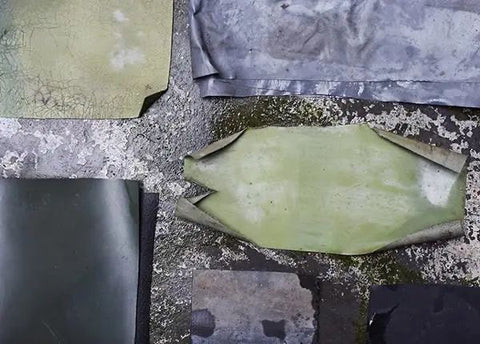
No Significant Improvement
Unfortunately, the two samples of Material that the factory sent over in the next two weeks showed no significant improvement in the strong odor and high temperature aging issues. Given that the backpack would be in contact with skin every day, we worried about its safety more and more. As a result, we sent the samples to a third-party testing for TVOC safety.
A week later, the results came back, failed. The levels of two volatile compounds, toluene, and ethylene, both seriously exceeded the national standards. These two volatile compounds not only posed an irritation risk to the skin and mucous membranes, but also posed a risk of poisoning to certain populations.
For us, this was fatal and unacceptable.
In the next few days, we spent hours making phone calls and eventually found a PHD in the rubber field and a senior engineer to consult on resolving the issue. Their answers were mixed, with some saying it could be solved without adding additives, others saying it was an unavoidable issue with the processing of petroleum byproducts, and others suggesting adding special fragrances to improve physical properties and so on.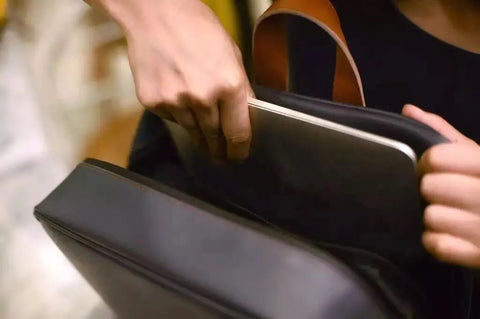 After reaching out to the factory again, their response was evasive, and it soon became clear that they had never conducted any tests for harmful volatile substances. They were “unfamiliar with the issue and had no solution to offer”.
After reaching out to the factory again, their response was evasive, and it soon became clear that they had never conducted any tests for harmful volatile substances. They were “unfamiliar with the issue and had no solution to offer”.
Moreover, five months into the project, it was also the only material processing factory we could find that was willing to work with us on small orders and was capable of producing the desired Material.
At this crucial juncture, we were faced with a difficult decision. Should we stick with the rubber Material that had an excellent feel and find another factory to resolve the safety concerns, or should we completely abandon it and search for a new material?
This sparked intense debates within our team.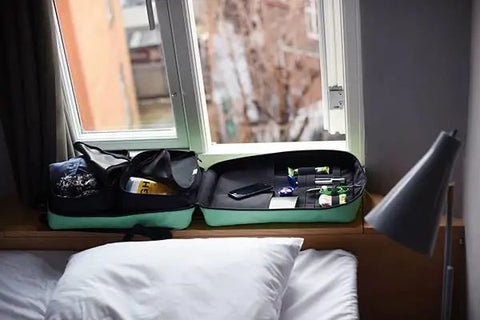 Meanwhile, the backpack functionality design and internal space planning were progressing much more smoothly in tandem.
Meanwhile, the backpack functionality design and internal space planning were progressing much more smoothly in tandem.
Traveling is a state of constantly staying and moving in different scenarios and spaces. This means that our functionality for the bag design needs to meet the needs of different scenarios and spaces, and the functional space design is carried out in a smooth iteration and testing process.
We gradually found the "ideal organizer backpack".
With our focus on excellence, the team made the decision to stick with our original framework and look for new materials that would match our functional requirements. We said goodbye to rubber Material and searched for something better that met our functional needs.

Bag Design: Return to our Origin Rediscovery
After taking the lesson to heart, we began to refine our approach to finding the perfect material.
First and foremost, we made sure to identify the core requirements of the material: it had to be safe and non-toxic----- not harmful to the human body. To achieve this, we researched relevant national standards as well as EU REACH standards, and gained a general understanding of the various indicators and testing methods. We then decided to adopt the both standards as our own safety standards for the material.
Additionally, as the main material for the backpack, it had to be waterproof, durable, weather-resistant, with a good texture. Furthermore, we wanted the material itself to be unique and interesting.
With these requirements in mind, we set out to explore two avenues. On one hand, we reached out to friends in the different coastal areas to learn about the local people's mainstream fishing wear. On the other hand, we started collecting various specialized Clothing and textile materials in the aquatic field. We made calls and sent emails to inquire about prices and request samples.
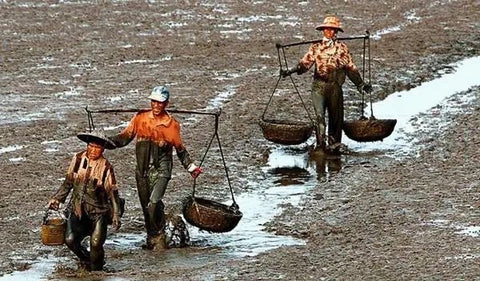 A trip to the coast brought rewards on both sides. A friend from the beach sent the most famous brand of fishing pants, which was the main equipment for clam diggers and shallow sea breeders at the time. The material felt like car tires and appeared to be waterproof and slip resistant. We tracked down the supplier of this material, one of the well-known PVC waterproof material suppliers in Jiangsu Province.
A trip to the coast brought rewards on both sides. A friend from the beach sent the most famous brand of fishing pants, which was the main equipment for clam diggers and shallow sea breeders at the time. The material felt like car tires and appeared to be waterproof and slip resistant. We tracked down the supplier of this material, one of the well-known PVC waterproof material suppliers in Jiangsu Province.
On the other hand, we found many professional garment material suppliers from various water-related industries. These factories mostly had mature manufacturing processes, including composite PU waterproof coated materials used by divers, composite TPU materials for inflatable boats and emergency tents, and Codura composite materials for military and outdoor equipment.
After getting all these samples, we checked the material safety standards with the corresponding suppliers and conducted outdoor weathering tests ourselves.
Taking the lessons learned, we made backpack samples with several materials this time. When several alternative materials and previous samples were put in front of us, we encountered a new problem - all of these new materials did not feel great to the touch. To be more accurate, they were rough and not as gentle as the first version of nitrile rubber material.

In the beginning of October, we received a phone call from the manager of one of the PVC waterproof material factories.
The manager said,
After the call, we immediately checked the European Union's substance of very high concern (REACH) list and queried the corresponding national standard and PVC material plasticizer composition issues. It was found that the EU has already prohibited this type of compound in REACH. This is because these toxic substances can affect human endocrine and reproductive systems.
This fatal defect, like the previous rubber material, cannot be tolerated, but at the time, we had difficulty confirming whether all PVC materials were unable to avoid this plasticizer issue.
So, we started reviewing our testing standards with other suppliers, and on the other hand, we contacted some PVC and PU material export processing factories in Jiangsu with special Material experience, hoping to find a suitable supplier from these companies that have been exporting orders for years.
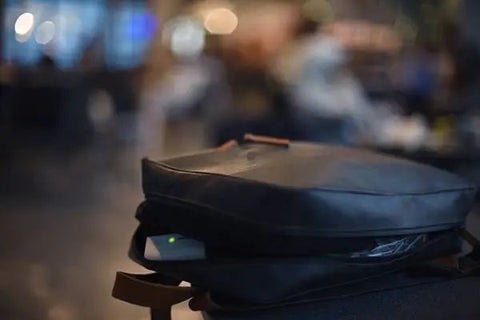
In the latest round of screening, we found a material supplier in Suzhou who specialized in exporting rain jackets and chemical protective suits, among other specialized Materials. Their material was a composite PVC material, but unlike the previous large-scale fishing gear material, this material was finer and had a softer feel, almost indistinguishable from the original nitrile rubber material. We immediately confirmed the testing standards with the factory and arranged for sample making.
When the new round of sample materials was laid out on our table, the one with the better hand feel from the new supplier was chosen as the new sample material.
After more than six months of repeated material changes and modification sampling, our backpack processing factory also joined forces with us. They were determined to stick with us until the end, even though the sampling process took so long. (We are still grateful for the first factory we co-operated with.)

During this time period, the bag design and internal aspect of the sample bag had become increasingly refined. The new main material combined with the hardware accessories also produced positive results. However, due to the production cycle of the processed material, we decided to sign a contract with a new material supplier to purchase the entire roll of material in order to ensure the continuation of sample production and timely completion of bulk orders.
With the suggestion of our quality control colleague, we clearly outlined in the contract the various testing standards such as national and REACH standards that needed to be passed. We also requested that the material supplier send us a sample first and arrange for the production of bulk orders only after the material safety inspection by a third-party testing organization specified by us.
To our surprise, after sending the contract email early in the morning, the factory did not respond to phone calls or emails all day. It was not until 6 PM that the factory replied with an email stating,
"After a discussion, we have decided to abandon your order. The latest standard requirements have already exceeded our capabilities. We deeply apologize for this. We hope you can understand. Looking forward to our next cooperation! :)".
I remember when we read this email, we just sat quietly in the office, looking at each other in shock.
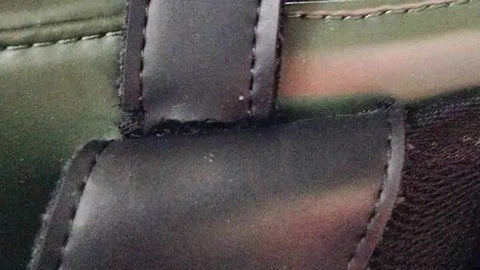
Forced to Abandon Frontal suture
Back to the stage of searching for a material supplier, our screening criteria were already relatively clear, starting with a few composite PVC material suppliers in Jiangsu province that we hadn't contacted yet. We quickly found a supplier in Jiangsu who produces exported materials, not only for chemical protective Clothing but also for exported children's raincoats and other clothing materials in Japan and Europe.
During our first visit, we confirmed all the chemical and physical specifications of the products and the testing standards that were required with the company in writing. After confirming that the other party was familiar with all the standards and received a positive response, we then started discussing the specific physical characteristics such as the feel and color.
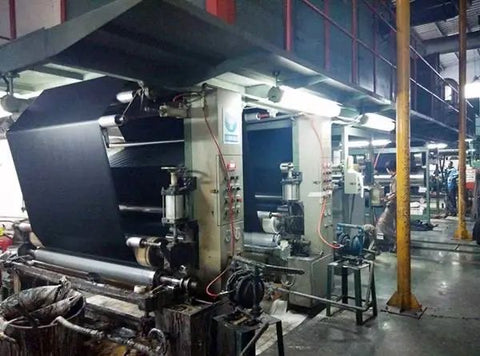
Upon receiving the samples, we immediately sent them for a third-party inspection to test for both Chinese national standard PVC composite material and EU REACH163. Although there were some setbacks during the process due to issues with the foaming agent and lining composition, the REACH163 only passed 162 out of 163 items and we failed to receive a passing report.
However, with both parties working hard, all compounds tests were passed, ensuring that the material used in our production line was non-toxic and harmless.
At our request, the factory engineers improved the plasticizer, making the material's weather resistance greatly superior to similar materials on the market. From minus 15 degrees Celsius to 45 degrees Celsius, the material maintained good physical and chemical performance, while its delicate and stable texture was also guaranteed.
When we received the inspection report email, everyone in the office cheered and applauded. Finally, we had usable material.

Afterwards, the material was used for bulk confirmation of samples and adjustments were made to various appearance details and load-bearing structures, as well as the purchase of internal bags and zipper accessories.
Just as we were about to confirm the sample, we received a call from the backpack processing plant project manager. He said that the front seam we liked so much couldn't achieve the desired effect during bulk production.
Especially in the four corner positions of the front and back, it couldn't turn smoothly. And because the packing was the last process, a small mistake here during processing would result in the entire bag being scrapped. So, if we insist on sewing the front seam, the processing waste rate of this backpack will be extremely high.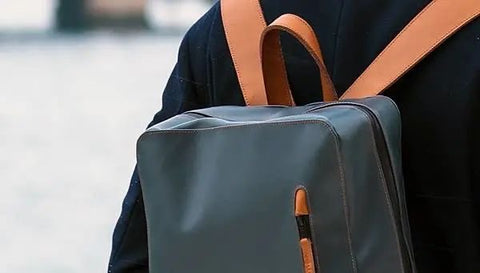
The Positive Seam Line Feature
The positive seam line feature was the most eye-catching visual element on the backpack and was a detail that was decided in the first draft of the bag design. The factory had never mentioned this problem during the ten months of sampling. Furthermore, the first batch of product style photos had already been completed in Denmark, so we faced the prospect of having to re-shoot all the products and adjust the delivery time and promotional plans for the first batch of products.
After rushing to the factory and speaking to the pattern maker in detail, we discovered that this was another problem caused by our own "stubbornness".
Specifically, firstly our main material was thicker and less elastic than the leather, which ensured the superior feel of the material. Secondly, we had lined both the front and back of the backpack to ensure that the backpack would have a firm outline even when empty.
These two points resulted in a high error rate when making this seam line, and as the final production step, any errors such as skipped stitches, broken threads, or missteps in sewing this line would render the entire bag useless before it was turned inside out.

But our designer, Rachel Xu, insisted that the backpack must have a stitch around the front.
So, for over a month after that, we had to endure the trials and experiments with the factory to find a new method, while also asking experienced master craftsmen for several "feasible solutions" as backup.
After several new samples were completed, we placed the new and old samples together. Although Rachel grudgingly admitted that the new backup solution was not as aesthetically pleasing as the old one in terms of the stitch details, the expected delivery date of the product did not allow us to try any more solutions.

Convincing The Team
To convince the team, we showed the new and old backpacks to more friends. Some of them couldn't see the difference between the two versions, and some even though the alternative solution provided by the factory was more attractive.
Taking into consideration several factors, Xiaobei reluctantly made the final decision to choose the current, more mature round-corner style that was closer to the market.
After the sewing process was confirmed, the factory was immediately arranged to start mass production. At the same time, a new photography plan was arranged with the photographer, and related work such as packaging design and online shop design was improved. All the work was finally completed quickly.
Finally, The bag design development was at a 100%.
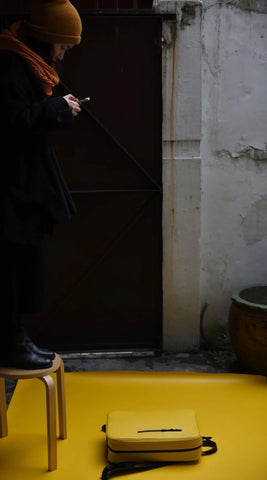
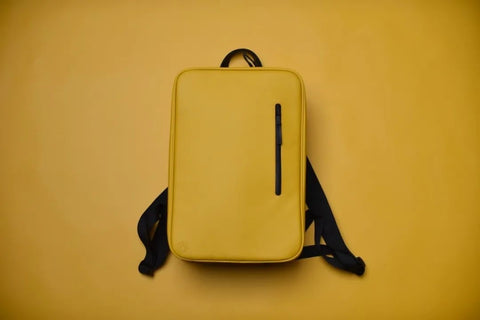

The product was still in production, when our friend informed us that he was participating in a lifestyle exhibition in downtown center and that a booth had suddenly become available. Excited by this opportunity, we quickly made arrangements with the factory to expedite the production and delivery.
The exhibition was scheduled to open at 11 AM, and by 10 AM, we arrived at the venue with 20 newly-made samples and a mini van. We quickly unpacked and set up our booth, hoping to make a lasting impression on visitors.
And that was how "Kiwee" was born.
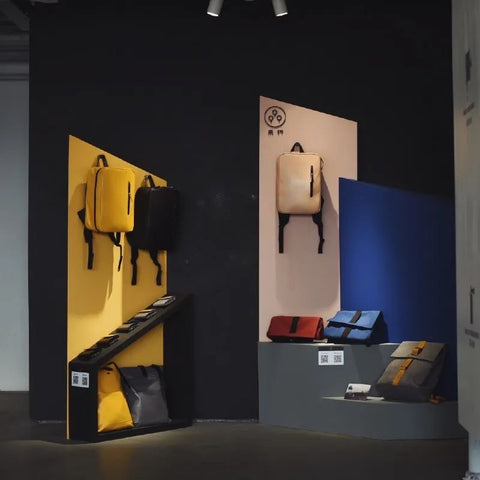

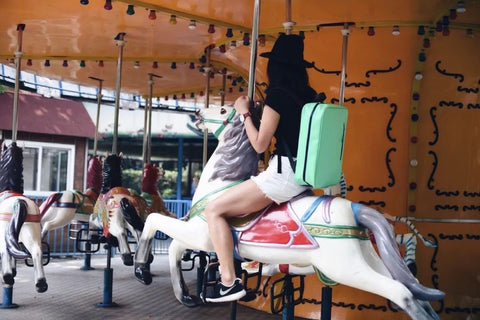
We made a backpack that satisfied us, the traces of time won't just be left in the words and pictures above.
In the process of communicating with professional suppliers,
we gradually realized that professional suppliers are an indispensable link in the good product chain.
We always approached the collaboration with a humble attitude and learned with engineers and skilled workers.

The brand "Kiwee" originated from our initial trip and that clam digger. So, we placed that image inside every bag on one side of the sticker. We recorded the moment of its inception.
Hope you enjoy reading our bag design story.
Product link: Kiwee Fisherman Backpack (Large)

